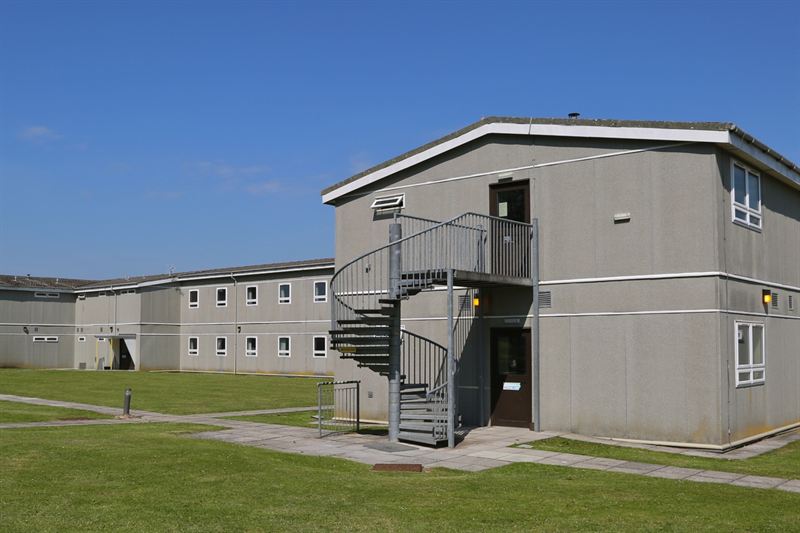Work starts to prepare Ludgershall site for new Army homes

Demolition work is underway at the MOD’s Corunna Barracks in Ludgershall, the site earmarked for 246 new Army family homes.
Working on behalf of the Defence Infrastructure Organisation (DIO), specialist contractors are pulling down 62 buildings, removing car parks and lifting and moving temporary accommodation units to other MOD sites for reuse.
DIO Project Manager, Andy Corcoran, said: “Preparing the site for development is a big task. Some of the hangars are about the same size as the Twickenham rugby pitch at more than 800m2. Other buildings being levelled include workshops, kit stores, catering facilities and vehicle servicing bays.
“This housing development is one example of how we’re supporting Service personnel and their families through the provision of a fit-for-purpose estate, including accommodation.”
The demolition works are scheduled to complete by early next year. A planning application for the new homes planned for the site has been submitted to Wiltshire Council; with building works to follow after all necessary approvals are obtained.
The homes are part of wider infrastructure proposals to accommodate the 4,300 extra troops planned to relocate to the Salisbury Plain area under the Army Basing Programme. A site for a primary school, land for community uses and open space are also included in the development proposals for Ludgershall.
The Army Basing Programme is providing the facilities the Army needs to live, work and train in the UK as it rebases across the UK, returns from Germany and restructures to its future Army 2020 formations.
Corunna Barracks has had an important past due to its strategic proximity to the Salisbury Plain Training Area. During World War Two, the site was used by the US Army to test and prepare vehicles for the invasion of Europe for the D-Day landings.
It was later home to 26 Engineer Regiment and more recently the barracks has been used as temporary accommodation for visiting military units, for storing Army medical supplies and as a storage facility able to hold hundreds of military vehicles, ranging from Land Rovers to large heavy armoured vehicles.
Further information:
Press enquiries to Nicole Herlihy, Communications Officer 01264 382 145
Email: DIOSSEComms-PubAffComms4b@mod.uk
DIO website: www.gov.uk/dio l Twitter: @mod_dio l Read DIO’s blog: https://insidedio.blog.gov.uk/
Notes to Editors
1) The Army Basing Programme (ABP) is a joint DIO and Army programme set up to implement the Regular Army Basing Plan announced by the Secretary of State for Defence in March 2013. It will provide the facilities the Army needs to live, work and train in the UK as it returns from Germany, rebases across the UK and restructures to its future Army 2020 formations.
2) A planning application for the new Army homes earmarked for the site was submitted to Wiltshire Council following a series of public exhibitions and consultation the planning applications is expected to be determined later this year.
3) The Defence Infrastructure Organisation (DIO) plays a vital role in supporting our Armed Forces by building, maintaining and servicing what the men and women who serve our country need to live, work, train and deploy on operations.
4) DIO is part of the Ministry of Defence (MOD). It is responsible for managing and maintaining land and properties, as well as providing related support services, to meet the current and future needs of the MOD and personnel at home and abroad, and to support current operations.
5) Our work includes supporting operational units by providing and improving single living and service family accommodation; training areas and historic military sites. DIO actively manages these to ensure the needs of Defence are met, value for money is achieved, and its heritage is protected, and to achieve its environmental goals. Prior to the start of the works at Corunna Barracks, a heritage assessment was conducted and records were made of historical elements, Wiltshire Council and Historic England were consulted.





